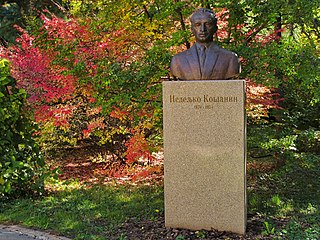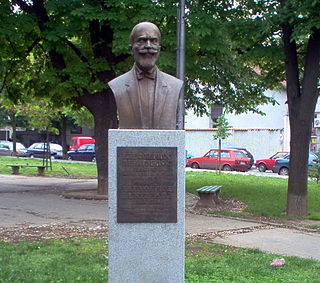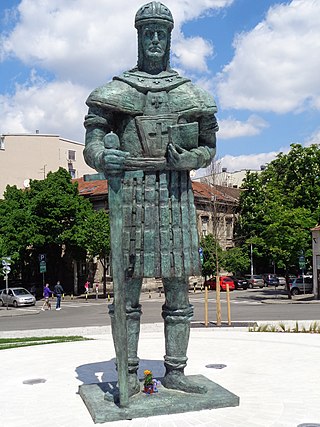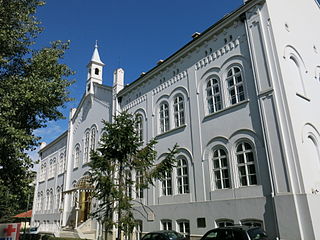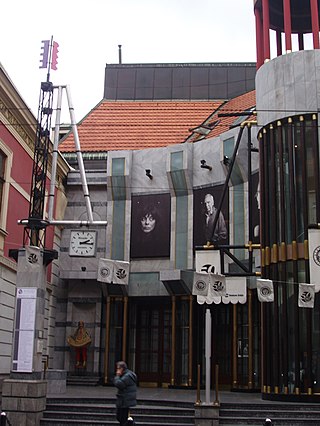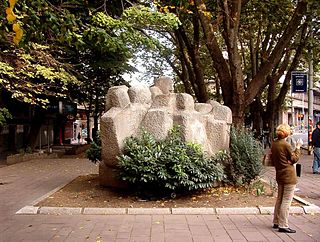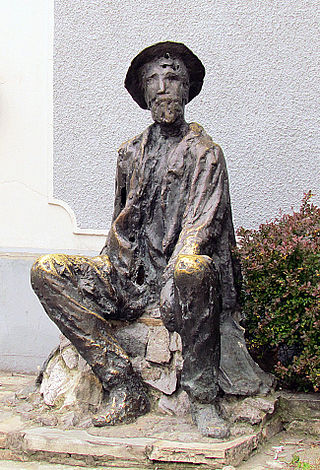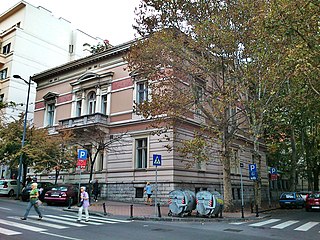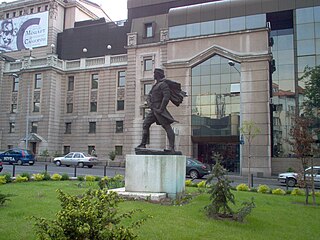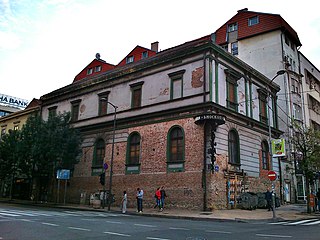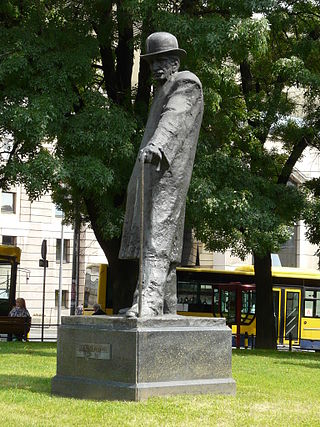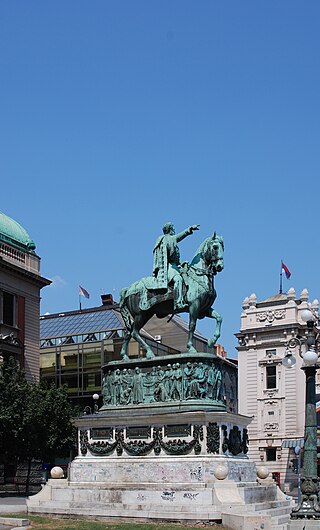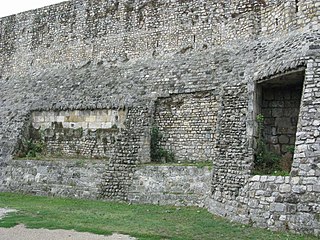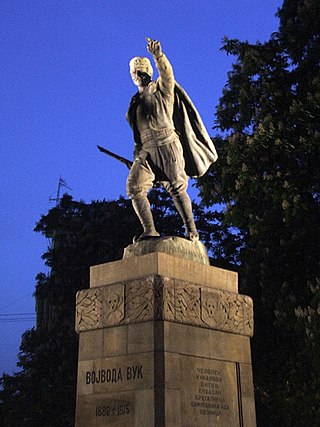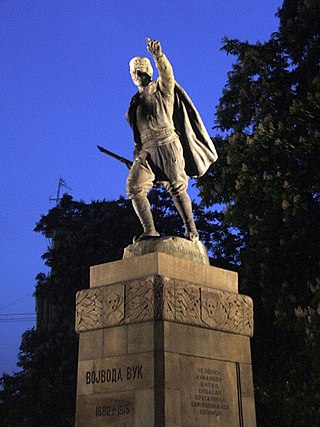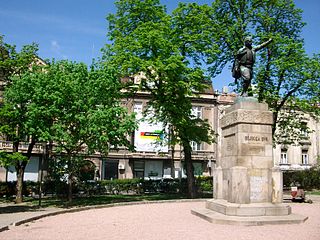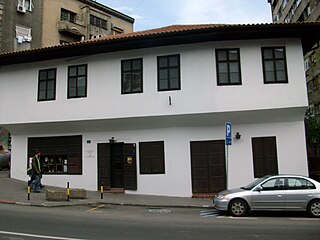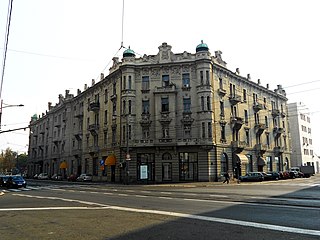Self-guided Sightseeing Tour #9 in Belgrade, Serbia
Legend
Guided Free Walking Tours
Book free guided walking tours in Belgrade.
Guided Sightseeing Tours
Book guided sightseeing tours and activities in Belgrade.
Tour Facts
5.2 km
154 m
Experience Belgrade in Serbia in a whole new way with our free self-guided sightseeing tour. This site not only offers you practical information and insider tips, but also a rich variety of activities and sights you shouldn't miss. Whether you love art and culture, want to explore historical sites or simply want to experience the vibrant atmosphere of a lively city - you'll find everything you need for your personal adventure here.
Activities in BelgradeIndividual Sights in BelgradeSight 1: Биста Недељка Кошанина
The memorial bust of Nedeljko Košanin is a monument in Belgrade. It is located in the Botanical Garden "Jevremovac" in the municipality of Stari Grad.
Sight 2: Биста Елефтериоса Венизелоса
The memorial bust of Eleftherios Venizelos is a monument in Belgrade. It is located on a green area consisting of Venizelosova, Vojvode Dobrnjca and Constantinople streets in the municipality of Stari Grad.
Wikipedia: Спомен-биста Елефтериосу Венизелосу у Београду (SR)
Sight 3: Monument to Despot Stefan Lazarevic
The monument to Despot Stefan Lazarević was erected on April 20, 2021 on the square in Despot Stefan Boulevard, between Gundulićev Venac, Drinčićeva and Milan Kašanina Streets.
Wikipedia: Споменик деспоту Стефану Лазаревићу (Стари град) (SR)
Sight 4: First Town Hospital
The First Town Hospital was built in Belgrade, the capital of Serbia in 1868. The construction was initiated by the ruling prince Mihailo Obrenović as the first building in Belgrade built purposely to serve as a hospital.
Sight 5: Museum of Jovan Cvijić
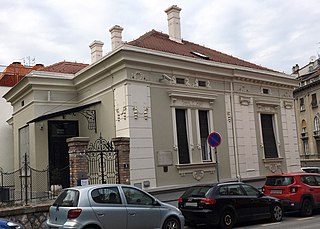
Please credit this with: "Sadko, Wikipedia" in the immediate vicinity of the image. A message or email to me would be appreciated as well. If you would like special permission to use, license, or purchase the image please contact me Sadko to negotiate terms. / CC BY-SA 4.0
The Jovan Cvijić Memorial Museum is located in the family home of Jovan Cvijić, a Serbian scientist and geographer.
Sight 6: Биста Јована Цвијића
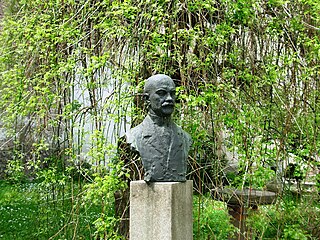
The memorial bust of Jovan Cvijić is a monument in Belgrade, in the municipality of Stari Grad.
Sight 7: Биста Милутина Бојића
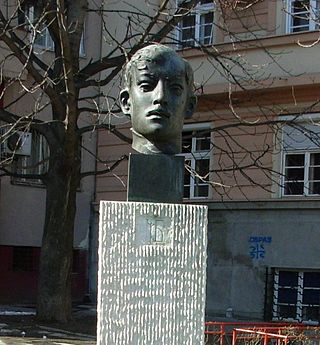
The memorial bust and square of Milutin Bojić is located on the corner of Palmotićeva and Milutine Bojića streets in the municipality of Stari Grad.
Wikipedia: Спомен-биста и сквер Милутина Бојића у Београду (SR)
Sight 8: Атеље 212
Atelje 212 is a theatre located in Belgrade, Serbia.
Sight 9: Monument to Mosa Pijade
The monument to Moša Pijade is located in Makedonska Street in Belgrade, on the territory of the city municipality of Stari Grad. It was built in the 1960s and is an immovable cultural asset as a cultural monument.
Sight 10: Monument to Djura Jaksic
The monument to Đuro Jakšić is a monument in Belgrade. It is located in front of the house where Jakšić lived and died, in Skadarska Street 34, in the municipality of Stari Grad.
Sight 11: Клуб књижевника
House of Milan Piroćanac is located in Belgrade, Serbia, at the corner of Francuska and Simina streets, and it has the status of a cultural monument.
Sight 12: Monument to Vasa Čarapić
The monument to Vasa Čarapić is located in the city municipality of Stari Grad at the intersection between Francuska Street, Braće Jugovića Street and Despot Stefan Boulevard. By the decision of the Government of the Republic of Serbia, it was included in the cultural monument.
Wikipedia: Споменик Васи Чарапићу у Београду (SR), Heritage Website
Sight 13: Фондација Саша Марчета
Cinema "Balkan" is located in Belgrade at 16 Braće Jugovića Street. As the location of significant events in the history of Belgrade and Serbia, the "Balkan" Cinema represents a testimony to the cultural, urban and architectural development of Belgrade since the second half of the 19th century. It has had the status of a cultural monument since 1984.
Wikipedia: Balkan Cinema building, Belgrade (EN), Heritage Website
Sight 14: Monument to Branislav Nušić
The monument to Branislav Nušić is a monument in Belgrade. It is located across the street from the National Theater, on the plateau of Zoran Djindjic in the municipality of Stari Grad.
Sight 15: National Theatre in Belgrade
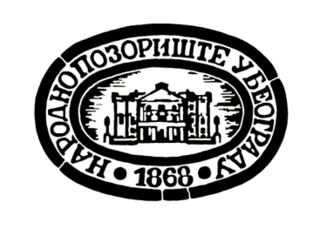
The National Theatre is a theatre located in Belgrade, Serbia.
Sight 16: Prince Mihailo Monument
Prince Mihailo Monument is a monument of Prince Mihailo. It is located in the main Republic Square in Belgrade, Serbia, and was erected in 1882. It was the first public monument with representation of an equestrian figure of a ruler in Serbia. The monument is by Italian sculptor Enrico Pazzi. Reliefs on the monument were performed according to the drawings of architect Konstantin Jovanović. The monument was declared a Monument of Culture of Great Importance in 1979 and it is protected by Republic of Serbia, as the oldest and the most representative figural Serbian memorial.
Sight 17: Антички Сингидунум
Singidunum was an ancient city which later evolved into modern Belgrade, the capital of Serbia. The name is of Celtic origin, going back to the time when the Celtic tribe Scordisci settled the area in the 3rd century BC, following the Gallic invasion of the Balkans. Later on, the Roman Republic conquered the area in 75 BC and incorporated it into the province of Moesia. It was an important fort of the Danubian Limes and Roman Legio IV Flavia Felix was garrisoned there since 86 AD. Singidunum was the birthplace of the Roman Emperor Jovian. It was sacked by Huns in 441, and by Avars and Slavs in 584. At the beginning of the 7th century, the Singidunum fort was finally destroyed.
Sight 18: Bosko Buha Theatre
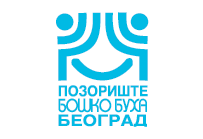
Boško Buha Theatre is a theater in Belgrade, the capital of Serbia.
Sight 19: National Museum of Serbia
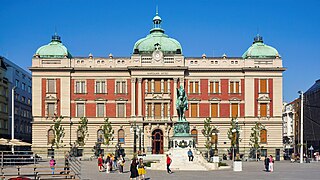
The National Museum of Serbia is the largest and oldest museum in Belgrade, Serbia. It is located in the central zone of Belgrade on a square plot between the Republic Square, formerly Theatre Square, and three streets: Čika Ljubina, Vasina and Laze Pačua. Its main facade is on the Republic Square and the official address ia 1a Republic Square.
Sight 20: Delijska Fountain
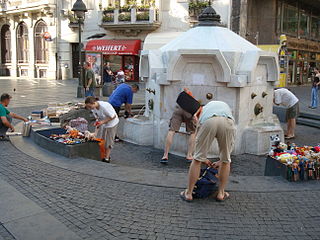
Delija fountain was the name of several fountains that were built in Belgrade. The name Delijska comes from the Turkish word for light cavalry, for whose horses the fountain was used.
Sight 21: Парк војводе Вука
Park Proleće or Park Vojvoda Vuk is one of the parks in downtown Belgrade, the capital of Serbia. It is located in the municipality of Stari Grad. It is also colloquially called Park on Topličin Venac. The roughly triangularly shaped park is one of the smallest in the central area of Belgrade, with an area of 3,700 m2 (40,000 sq ft).
Sight 22: Monument to Vojvoda Vuk
Monument to Vojvoda Vuk is a sculpture in the Park Proleće in Belgrade, Serbia. The sculpture was created by Đorđe Jovanović in 1922 and the monument was erected in 1936. It is dedicated to the most respected figure of the Chetnik movement.
Sight 23: Museum of Applied Arts
The Museum of Applied Art is an art museum in Belgrade, Serbia.
Sight 24: Monument to Aleksandar Deroko

The monument to Aleksandar Derok was unveiled on March 9, 2022, in the immediate vicinity of Vojvode Vuk Park and the building where Deroko lived, and on the corner of Topličin Venac, Čubrina and Ivan begova streets in the territory of the City Municipality of Stari Grad.
Sight 25: Manak's House
Manak's House is a building on the outskirts of the former Savamala, Belgrade. It is located on the corner of Kraljevića Marka and Gavrila Principa Streets in Belgrade, Serbia. It was declared a cultural monument by the Cultural Heritage Preservation Institute of Belgrade on 9 May 1963.
Sight 26: Bristol Park
Park Bristol is a park in Belgrade, the capital of Serbia. It is situated in the neighborhood of Savamala, between the incoming and outgoing platforms of the Belgrade Main Bus Station. It is located in the municipality of Savski Venac.
Share
How likely are you to recommend us?
Disclaimer Please be aware of your surroundings and do not enter private property. We are not liable for any damages that occur during the tours.
GPX-Download For navigation apps and GPS devices you can download the tour as a GPX file.
